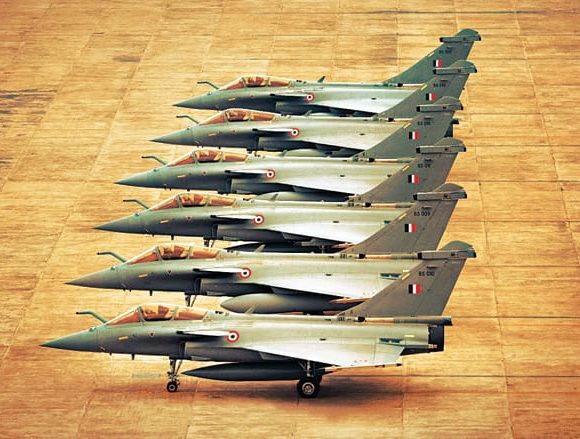
Breaking Down The News: Kaveri Engine Enters Russian Skies to Prepare for India’s Indigenous UCAV Era
India’s long-struggling Kaveri engine project has unexpectedly re-emerged as a potential game-changer, not for the fighter jets it was originally meant to power, but for a new generation of unmanned combat aerial vehicles (UCAVs). In a significant development, the dry variant of the Kaveri engine is undergoing trials in Russia, with roughly 25 hours of test flying remaining before the engine can be certified for operational integration. These trials represent more than a technical formality — they are a decisive moment in India’s ambition to achieve self-reliance in critical military aerospace technologies.
The revival of the Kaveri engine comes against the backdrop of India’s increasing dependence on imported loitering munitions and drones. During Operation Sindoor — the Indian military’s recent retaliatory strike campaign targeting Pakistan-based terrorist infrastructure — India relied on Israeli-origin drones like the SkyStriker and Harop. While these systems proved effective, they underscored a deep and strategic vulnerability: the inability to deploy advanced unmanned systems powered by indigenous technology. Kaveri, once a symbol of failed ambition, is now being recast as the propulsion backbone of India’s upcoming stealthy UCAVs — CATS Warrior and Ghatak.
Originally designed to power the HAL Tejas fighter jet, the Kaveri engine failed to meet thrust and weight requirements for manned fighter aircraft and was decoupled from the Tejas program over a decade ago. However, the core engine was not discarded. Instead, DRDO’s Gas Turbine Research Establishment (GTRE) recalibrated the program’s ambitions. A dry (non-afterburning) variant of Kaveri, which generates around 46 kN of thrust, was found to be an ideal match for unmanned aerial platforms — especially stealth drones that do not require the high-speed burst of afterburners. This adaptation reflects a pragmatic shift in India’s indigenous defense manufacturing: repurposing existing investments rather than abandoning them.
The two drones that will be powered by the dry Kaveri are not science fiction projects. They are already in advanced stages of development and represent India’s first real push into high-performance autonomous aerial warfare.
Table 1: Key Specifications and Role of Platforms Targeted for Kaveri Engine Integration
| Platform | Type | Role | Engine Type | Payload Capacity | Status |
|---|---|---|---|---|---|
| CATS Warrior | Jet-powered UCAV | Loyal wingman, recon-strike | Dry Kaveri | ~500–600 kg | Under development |
| Ghatak UCAV | Stealth UCAV | Deep-strike, autonomous | Dry Kaveri (mod) | ~1000+ kg | In prototyping phase |
The CATS Warrior, developed by Hindustan Aeronautics Limited (HAL) in collaboration with NewSpace Research & Technologies and DRDO, is envisioned as a loyal wingman — an unmanned stealth drone that can accompany manned fighter jets, absorb enemy fire, conduct reconnaissance, or execute precision strikes. It is designed to function in coordination with platforms like the Tejas Mk-1A and Su-30MKI, receiving commands from a mothership aircraft (designated CATS MAX). The Kaveri engine’s dry configuration perfectly matches the size, range, and thrust requirements of this platform, offering a propulsion solution that avoids foreign engine dependencies.
Ghatak, on the other hand, is a more ambitious platform led by DRDO and ADA. It follows a flying wing design — similar in profile to the American B-2 or the European Neuron — aimed at achieving deep penetration and low radar signature. Ghatak is envisioned for long-range autonomous missions, including first-strike and high-value target eliminations, and is not tied to any mothership. The Kaveri engine variant for Ghatak will likely include thermal and acoustic signature reduction modifications to fit the stealth profile.
Table 2: CATS Warrior vs Ghatak UCAV — Mission Profiles and Capabilities
| Feature | CATS Warrior | Ghatak UCAV |
|---|---|---|
| Stealth Design | Moderate | High |
| Flight Range | Medium (~700 km radius) | Long-range (1000+ km) |
| AI Autonomy | Semi-autonomous (loyal wingman) | Fully autonomous |
| Reusability | Yes | Yes |
| Strike Role | Tactical, support | Strategic, deep-strike |
| Engine Configuration | Dry Kaveri | Dry Kaveri (stealth-tuned) |
| Integration Timeline | Target: late 2025–2026 | Prototype phase till 2027 |
The decision to conduct Kaveri engine trials in Russia may seem surprising at first glance, but it is rooted in clear technological and logistical reasoning. India does not yet possess a fully equipped flying testbed aircraft capable of evaluating a new jet engine in live flight conditions. Russia, however, has decades of experience in this field and operates platforms like the IL-76 LL (Flying Laboratory), which is routinely used to test experimental engines. Rather than investing time and resources into developing or retrofitting a domestic testbed, India opted to lease flight hours on a proven Russian platform — allowing for rapid validation.
This arrangement offers multiple benefits: accurate testing under varied atmospheric pressures, temperature conditions, and engine stress loads; real-time measurement of vibration harmonics and thrust variations; and faster turnarounds for trial phases. It also avoids the diplomatic bottlenecks that might arise with Western partners — countries that are often hesitant to assist with dual-use technology programs due to concerns about export control, transfer of military-grade software, or geopolitical constraints.
The testing in Russia is not about outsourcing innovation — it’s a practical necessity. Once this final 25 hours of flight validation is complete, the engine can be formally cleared for integration into India’s drone programs. In the broader picture, these tests mark the conclusion of a long and painful chapter in Indian jet engine development, and the beginning of a new, autonomous one.
Until these new drones are operational, India is forced to depend on foreign systems — and that was evident during Operation Sindoor. In that campaign, India deployed SkyStriker drones for precision strikes. These are loitering munitions developed by Israeli firm Elbit Systems, and are being assembled in India through a joint venture. Though effective and combat-tested, they have limitations: they are single-use (kamikaze-style), cannot return once launched, and their command software remains foreign-controlled. In a high-tech war scenario, that translates into vulnerabilities India can ill afford.
Table 3: Comparing SkyStriker (Current) vs CATS Warrior / Ghatak (Indigenous UCAVs)
| Feature | SkyStriker (Israeli) | CATS Warrior / Ghatak (Indian) |
|---|---|---|
| Origin | Israel | India |
| Engine Type | Electric / prop-based | Jet-powered (Kaveri) |
| Stealth Capability | Minimal | Designed for stealth |
| Strike Capability | One-time (kamikaze) | Reusable, multi-sortie |
| Software Control | Foreign-owned | Indian-controlled |
| Export Restrictions | High risk | Zero risk |
| AI Integration | Minimal | Advanced AI for autonomy & teaming |
These comparisons clearly establish the qualitative leap India is aiming for with Kaveri-powered drones. The transformation isn’t just about hardware — it’s about full-spectrum sovereignty. A SkyStriker may hit its target, but a CATS Warrior can strike, return, recharge, and fly again. More importantly, its flight profile, targeting, and mission logic will be owned by Indian systems — a crucial factor in future wars that will be as much about cyber and software as about metal and missiles.
The geopolitical implications are also significant. India is not just building drones; it is building the infrastructure to export them one day — something that isn’t possible when the propulsion system is under foreign license or control. A Kaveri-powered Ghatak or CATS Warrior can be offered to partner countries without running afoul of US ITAR restrictions or EU arms clauses.
Table 4: Why Kaveri Makes Strategic Sense
| Strategic Dimension | Foreign UCAVs (SkyStriker, Heron TP) | Indigenous UCAVs (Kaveri-powered) |
|---|---|---|
| Propulsion Ownership | No | Yes |
| Supply Chain Control | Partial | Full |
| Export Potential | Restricted | Unlimited |
| Mission Software Access | Black-box limitations | Full-access, custom AI |
| Vulnerability to Sanctions | High | Low |
| Indigenous Value Addition | Assembly only | Full stack (design-to-flight) |
The revival of the Kaveri engine through its adaptation for unmanned platforms is more than a technological milestone — it is a strategic recalibration. From a failed fighter jet engine to the core of India’s indigenous stealth drone program, Kaveri’s transformation reflects both persistence and pragmatism. What could not be achieved in the manned domain has now found the perfect fit in the unmanned frontier — a sector where India is determined not to fall behind global peers.
By choosing to test the engine in Russia, India has avoided bureaucratic delays and infrastructural constraints while maintaining complete control over engine integration and eventual deployment. The decision is not about dependence; it’s about fast-tracking indigenous capability by using global facilities without compromising sovereignty.
Moreover, the emergence of the CATS Warrior and Ghatak drones powered by Kaveri offers a clear pathway to replacing imported drones like SkyStriker and Heron TP. These new systems will not just carry out missions — they will do so under full Indian control, from propulsion to programming. The reuse capability, advanced stealth, AI-based decision making, and domestic hardware-software stack mean India will no longer have to rely on Israeli, American, or European approvals to deploy or export its drones.
The Kaveri program’s journey is a testament to iterative innovation. Failure in the fighter space did not end its relevance — it simply redirected its future. And in a future where combat autonomy, unmanned precision, and stealth-first platforms will dominate, the Kaveri engine stands not as a relic, but as a resurrection. When CATS Warrior and Ghatak finally take to the skies in active combat, they won’t just be Indian drones. They will be Indian statements — propelled by an Indian heart.


















